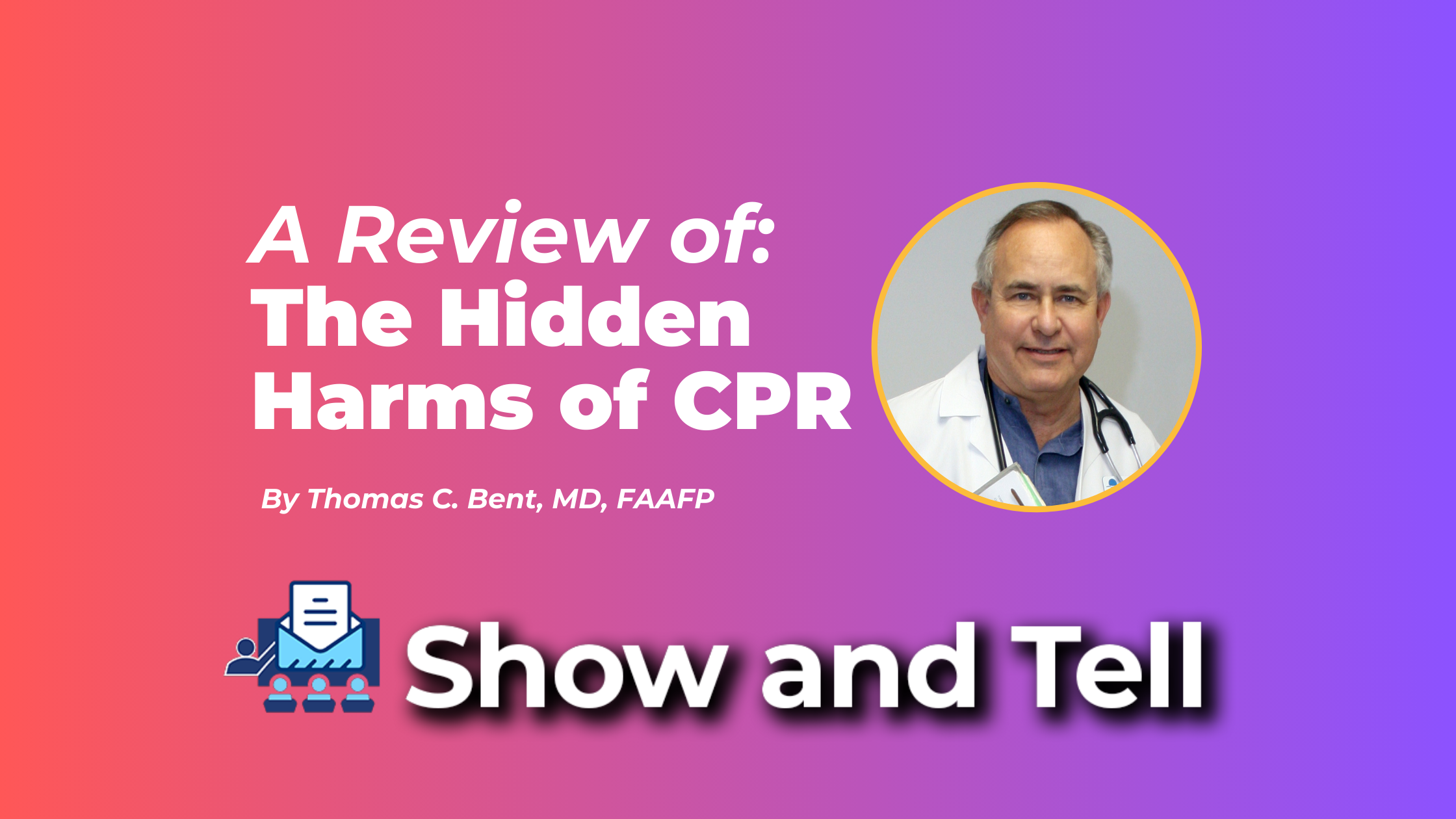
A Review of: The Hidden Harms of CPR
By Thomas C. Bent, MD, FAAFP
Dr. Sunita Puri’s sensitive and insightful article, The Hidden Harms of CPR, in the August 5, 2023 New Yorker magazine examines not only the mechanics of end of life, but the lack of good communication with patients and families during difficult times. She recalls the severe lack of training in the skills and procedures of patient communication during medical school and residency. In her work as the program director of the Hospice and Palliative Medicine Fellowship at University of Massachusetts’s Chan School of Medicine, she is working diligently to correct this deficiency.
The subtitle of the article is “The brutal procedure can save lives, but only in particular cases. Why has it become a default treatment?” A good doctor and a good storyteller, she begins with a case study. We follow 67-year-old Ernesto’s journey through COVID in January of 2021, interspersing his story with little-known data on CPR’s frequent futility. “Although CPR has become synonymous with medical heroism, nearly eighty-five percent of those who receive it in a hospital die, their last moments marked by pain and chaos.” She then notes that hospitals in Michigan and Georgia reported zero CPR survival for COVID patients.
Dr. Puri discusses that the public perception of CPR’s success is much greater than reality. TV and film, as well as the rare but dramatic resuscitations on the playing field, give the procedure a miraculous aura. If CPR saves all these lives of young, otherwise healthy people with a reversible cause of cardiac arrest, why can’t it bring back my terminally ill grandfather? With this perspective, conversation with seriously ill patients and their families requires special training and aptitude on the part of the attending physician and other clinicians. A DNR order is often perceived as admitting failure and families fear will lead to withholding less invasive treatments and measures of comfort. The author suggests using the term “allow natural death” (A.N.D.).
“Words have always been the basis of the relationship between doctors and patients. If our language is failing us, it’s because our training had.” Dr. Puri concludes, “I know now that these conversations are demanding the same precision as everything else in medicine. Doctors must learn to say what is true.”
This article reminds me of what Family Doctors do best – we talk to our patients, and we listen.